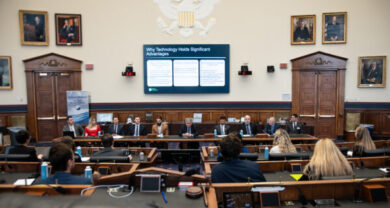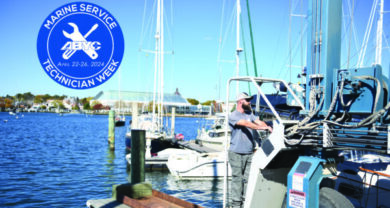New Jersey Governor pledges fight against harmful algal blooms

Late last month, New Jersey Governor Phil Murphy announced that his administration will distribute more than $13 million to fund a new initiative to reduce and prevent future harmful algal bloom outbreaks in New Jersey.
The NMMA said it applauded the program, which will fund science-based prevention, mitigation, study, and response efforts across the state.
“The presence of harmful algal blooms in New Jersey’s waterbodies severely impacts our public health and economy,” said Governor Murphy. “The rise of harmful algal blooms is a global challenge and our initiative to reduce future blooms will allow us to protect the health of our residents, as well as the economies of our lake communities. I am grateful for the continued collaboration with our local, state, and federal partners to proactively address this environmental challenge and become a national model for reducing the occurrence of harmful algal blooms.”
In 2019, there were over 70 suspected and 39 confirmed harmful algal blooms in New Jersey, which is higher than the previous two years. The new initiative includes three components to prevent harmful algal blooms from forming in New Jersey’s waters. The first component provides more than $13 million in funding to local communities to reduce harmful algal blooms.
- $2.5 million will be available as matching funds for lakes and harmful algal bloom management grants, including treatment and prevention demonstration projects. The Department of Environmental Protection (DEP) will issue a request for proposals in December and will offer a 100 percent match, resulting in $5 million in total projects.
- In early December, New Jersey will make up to $1 million in Watershed Grant funding available for planning and projects that reduce the nonpoint source pollution, including nutrients, that contribute to harmful algal blooms in surface waters of the State. A match will not be required, but will improve the project ranking.
- New Jersey will offer $10 million in principal forgiveness grants through the Clean Water State Revolving Fund for half of the cost, capped at $2 million, of sewer and stormwater upgrades to reduce the flow of nutrients to affected waterbodies.
The second element of the initiative is to build upon the state’s scientific expertise and enhance its capacity to respond to harmful algal bloom events. This includes establishing a team of experts from across various sectors to evaluate the state’s strategies to prevent HABs and pursuing additional monitoring, testing and data management capacity.
The third component increases the Department of Environmental Protection’s ability to communicate with affected communities. The Department will host two regional harmful algal bloom summits in early 2020 to better share information ahead of the warmer months when harmful algal blooms begin to appear. To assist with this effort, the Department will also develop new web tools to better communicate HAB incidents. The Department will continue to assist local governments with stormwater and septic discharge compliance and investigate facilities near waterbodies to ensure compliance with discharge permits.




